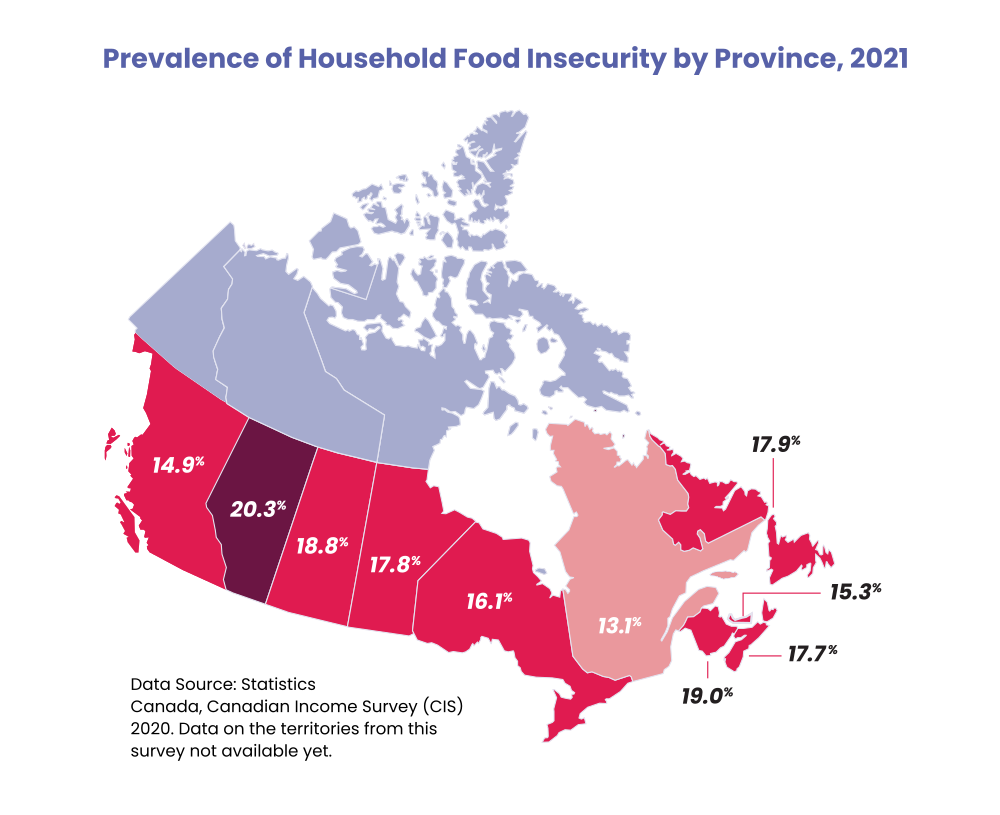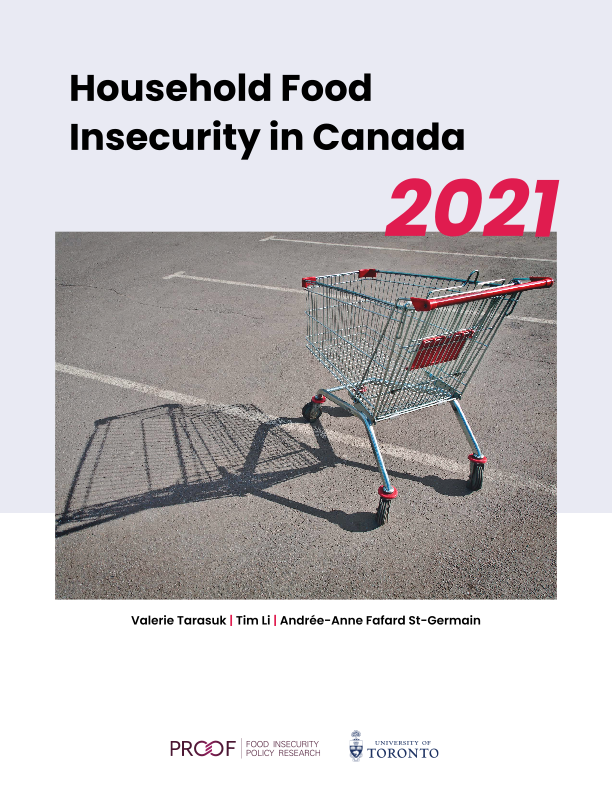Household Food Insecurity in Canada, 2021
August 16, 2022
How to cite this document:
Tarasuk V, Li T, Fafard St-Germain AA. (2022) Household food insecurity in Canada, 2021. Toronto: Research to identify policy options to reduce food insecurity (PROOF). Retrieved from https://proof.utoronto.ca/
Correction (2022-11-16): The column headings of Appendices H and I previously said number and percentage of households, instead of individuals. The appendices have been corrected to say individuals. Our apologies for any confusion.
About Report
Following the inclusion of food insecurity as an indicator for Canada’s Poverty Reduction Strategy in 2018, Statistics Canada’s Canadian Income Survey (CIS) began annual monitoring of household food insecurity.
Drawing on data 54,000 households from the CIS, we present a portrait of household food insecurity in Canada in 2021, examining who is most affected and how food insecurity rates differ across the country. We also use CIS data to examine food insecurity rates in 2019 and 2020, providing a look at food insecurity before and after the start of the COVID-19 pandemic.
In 2021, 15.9% of households in the ten provinces experienced some level of food insecurity in the previous 12 months. That amounts to 5.8 million people, including almost 1.4 million children under the age of 18, living in food-insecure households.
Users should also not compare statistics from CIS, described in this report, with previous reports using Statistics Canada’s Canadian Community Health Survey (CCHS) due to important differences between the two surveys. See “Differences from other reporting of household food insecurity statistics” on page 10 of the report for more information.
Read our blog post, New report finds persistently high rates of food insecurity, policy action on inadequate income needed.
Read our story in the Temerty Faculty of Medicine News.


The PROOF status reports are protected under a Creative Commons Attribution-NonCommercial 4.0 International License that allows you to share, copy, distribute, and transmit the work for non-commercial purposes, provided you attribute it appropriately to the original source. Please see Licensing & Attribution for more information.

